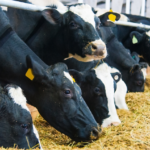
GMO Labeling: What You Need to Know
Food made from genetically-modified organisms (GMOs) is a top-of-mind issue for some consumers, and the subject has been the focus of television programs like The Doctors, which recently featured a segment on GMOs and GMO labeling. We asked Dr. Patrick Byrne, professor of plant breeding and genetics at Colorado State University, to provide his opinion on the subject of labeling genetically modified foods.
Consumers are becoming increasingly more interested in where their food comes from, and they have a right to know what they’re eating. Should foods containing GMOs be labeled so that consumers are aware of whether their foods contain them, and so they can have the choice to purchase them or not?
Dr. Byrne:
In an ideal world, consumers would be well informed about the pros and cons of GMOs and would make rational decisions about whether to purchase or avoid them. In my experience, the general public, as well as groups that one would expect to be better informed (such as high school science teachers) are very poorly informed. The anti-GMO groups have been so diligent in spreading fearful messages about GMOs that I expect a label would be interpreted as a warning that there is something dangerous about GMOs in food.
The Food and Drug Administration (FDA) has classified GMOs as Generally Regarded as Safe (GRAS), so do we really need to label food products containing GMOs?
Dr. Byrne:
The FDA does require labels in cases where a GMO food has altered allergenic, toxic, or nutritional properties compared to the conventional counterpart. GMOs, like any new technology, have potential risks that should be carefully evaluated before they are de-regulated. The risks will vary depending on the crop, the trait and the specific transgene involved. Therefore, it is important to have a regulatory system that carefully evaluates risks and benefits and acts to ensure public safety.
Are there currently any GMO labeling requirements?
Dr. Byrne:
In addition to what’s mentioned above, FDA has published guidelines on voluntary labeling of GMO-containing foods or foods without GMO ingredients.
What benefits are there for labeling GMO food products?
Dr. Byrne:
If a consumer chooses to avoid GMO-containing foods for whatever reason, he/she would be able to do so by paying attention to labels. Labeling could open up markets for non-GMO foods.
What disadvantages are there for labeling GMO food products?
Dr. Byrne:
Although there are many uncertainties about the cost of labeling, there would certainly be some increased costs involved, due to the need for testing and segregation of products. The costs would be imposed on the whole food system, not just those concerned about the issue. The US food system infrastructure is currently not capable of segregating GMO and non-GMO ingredients and products. The restriction on GMOs in the form of labeling would likely discourage investment in future development of GMO crop varieties. This would be unfortunate, because for certain traits and crops GMO technology might be the most environmentally beneficial and cost-effective solution to a problem such as drought stress or insect damage.


























